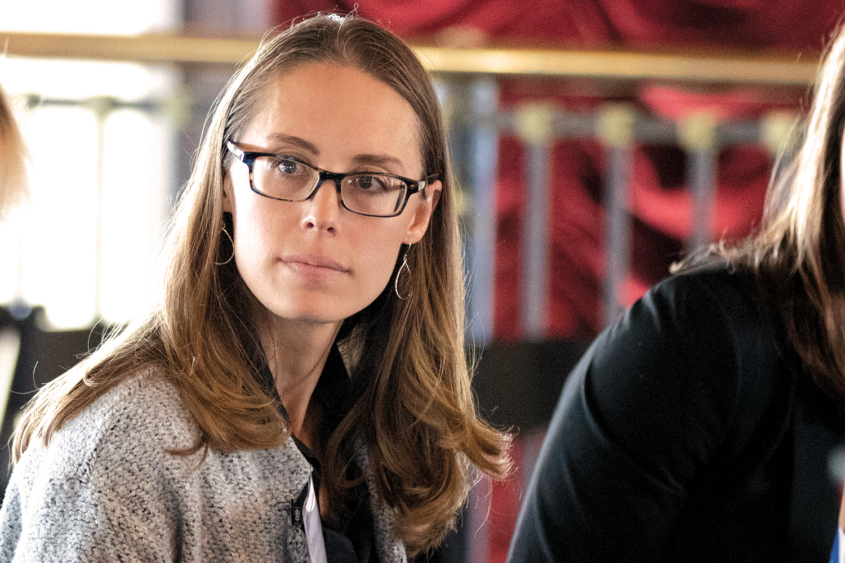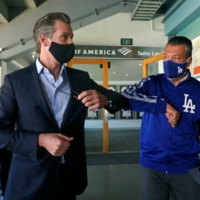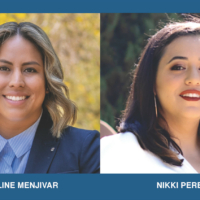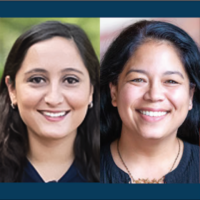
Luskin Center for Innovation and a Case Study of Community-Led Research
One of the cornerstones of many research center efforts at UCLA Luskin is community-driven research. Take, for example, the Transformative Climate Communities (TCC) project, with evaluation spearheaded by the Luskin Center for Innovation. Work at UCLA related to TCC has been going on for many years and in many forms, ranging from policy decision guidance for state officials to on-the-ground documentation of grassroots climate action. The team from the Luskin Center for Innovation is tracking hundreds of millions of dollars invested in local climate action. For example, they’re measuring the impacts of energy efficiency upgrades, like smart thermostats and LED lighting, to cut down on greenhouse gas emissions and reduce energy bills. Taking you inside this effort are researchers affiliated with the Luskin Center for Innovation, who are all UCLA Luskin alumni.
Colleen Callahan MA UP ’10, co-executive director; Silvia R. González BA ’09, MURP ’13, UP Ph.D. ’21, director of research, UCLA Latino Policy and Politics Initiative and an LCI-affiliated scholar; Jason Karpman MURP ’16, project director; and graduate researcher Elena Hernandez, MURP and MPH ’22
Tell us about what TCC is and how UCLA got involved.
González: TCC is all about recognizing the strengths of community institutions and individuals who are pushing forward environmental justice policies.
It’s focused on the ground-breaking climate action that’s happening in communities across California, with a focus on disadvantaged communities that have historically experienced disinvestments. Many of these residents are on the front lines of climate change.
The program encourages their visions for climate resilience by supporting them with power and financial resources. It’s really a leading example of local climate action.
Callahan: We first got involved because the state wanted to understand if the program was on the right track. We were called in as evaluators. And evaluation is really important to tell you a number of things: Like are we setting ourselves up for success? Do we have the right ingredients in place, the right kind of logic model or theory of change established? And are we putting in the right investments to achieve this vision?
The Luskin Center has a long track record of doing policy-applied research and working very closely with state administrators to improve their programs. So, this reputation of creating actionable research, plus the longstanding relationships we’ve had with local community organizations, have been essential.
Can you describe those relationships?
González: In the case of Pacoima — one of the communities that we’re working with — UCLA Luskin has a long-term relationship with Pacoima Beautiful [a grassroots environmental justice organization], and there’s an established trust. We’ve taken time to build a relationship with communities around us. For instance, Veronica Padilla [executive director of Pacoima Beautiful] graduated from the master’s in urban planning program. Before joining the evaluation team, I had been working with Pacoima Beautiful for years even prior to TCC.
But long-standing relationships aren’t always the case for researchers. There’s always a lot of mistrust in communities of color with outsiders coming in.
It was really easy to work with community members since we had a long-standing history together. The trust we built over time enabled us to speak directly with residents and staff of community organizations. That access helped us gather new insights in our research that we wouldn’t have otherwise gotten.
Karpman: To add to that, one of the reasons Pacoima chose us as an evaluator is the collaborative work that UCLA has already been doing in the community, particularly through Silvia, while at the Center for Neighborhood Knowledge, and the work that she and Professor Vinit Mukhija did as part of a Luskin MURP comprehensive project class.
They developed a displacement avoidance plan in collaboration with residents. It was really a generative endeavor that turned into new research projects and partnerships. It’s been cool to see how that project has endured even after the students have graduated.
Describe examples of what community-led research looks like in the TCC project.
González: The TCC’s evaluation approach of community-based research isn’t just surface-level. It’s about our research methods, the principles that are guiding the on-the-ground work, and the way the project is amplifying the voices of community members.
Hernandez: For instance, we attend as many in-person events as we can, and we try to attend all of the collation meetings with other local organizations. We’ll go to neighborhood fairs and speak directly to residents. We walk a fine line between being a partner and an evaluator. We’re there to collect data, but also to support the site.
We also want to make sure that our research deliverables are actually useful, so it’s not an extractive one-way street where researchers get data and then leave. It’s actually beneficial.
Our annual progress reports show impacts of the community’s work, with detailed numbers and profiles of residents. They showcase the community’s accomplishments with TCC.
They’ve been really meaningful to the community members. I always enjoy talking to residents and hearing what’s important to them. It’s fun to see how they light up when they talk about their projects. They’re really proud.
What type of impacts has the research had?
Karpman: It’s really informing active discussions about how to address climate change in an equitable way. Our work as an evaluator is going to help inform the degree to which this model gets replicated across the country.
Callahan: TCC is now part of the national dialogue around making federal climate investments more equitable, and federal agencies are looking at TCC as a model. Our research is documenting the benefits of resourcing and empowering historically underserved communities to realize their visions for community health, well-being and prosperity while combating the climate crisis.
González: Another impact is that it opens up an opportunity to bring in a more diverse set of researchers to UCLA who are interested in equity-focused work, and researchers that come from the front-line communities.
That’s one of the benefits that I see for the Luskin Center, that now you’re going to have people like me and like Elena, who come with a diverse set of experiences or identities. That will have an impact over the long run.
Karpman: That’s a good point. Since we’ve started working on TCC, the racial and socioeconomic diversity
of our graduate student research pool is really different.
Hernandez: In this project, I feel seen. This is research that I can be part of and give back to my community.
At the same time, this is a way to highlight the stories of community members. Because at the end of the day, they’re the ones doing the important work.








Leave a Reply
Want to join the discussion?Feel free to contribute!